Terms and Definitions
What Is GSM?
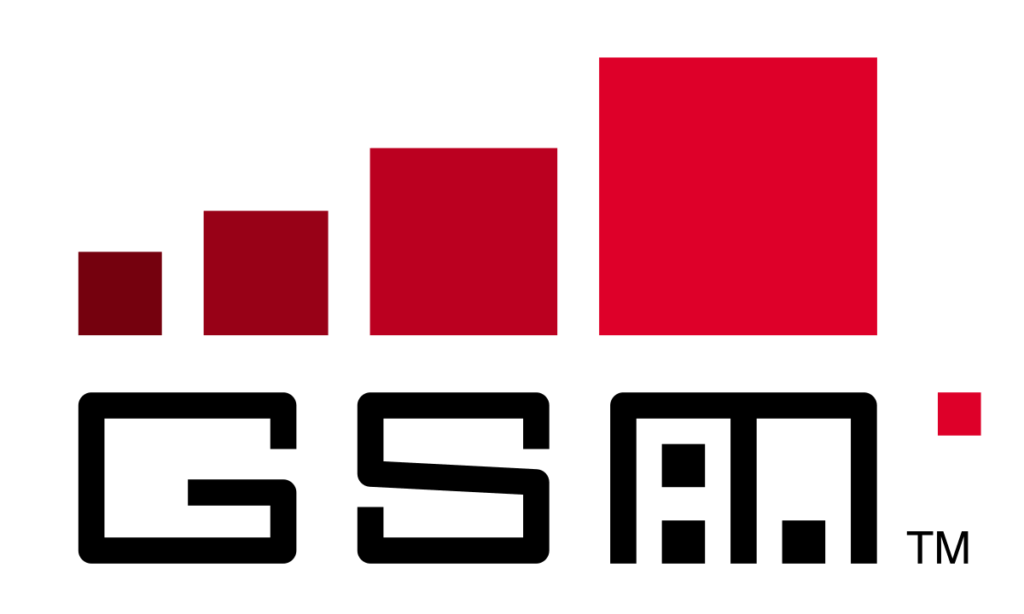
GSM stands for Global System for Mobile Communications. It is a standard developed by the European Telecommunications Standards Institute (ETSI) to describe the protocols for second-generation (2G) digital cellular networks used by mobile devices such as mobile phones and tablets representing a transition from analog to digital telecommunications.
When the Global System for Mobile Communications was first introduced in Europe in 1991, these 2G networks created faster, more secure wireless connections. For the first time, voice communications became encoded into digital signals before being transmitted through the network.
GSM reigned for years as the world’s most widely used standard for mobile communications. But today, 2G networks are significantly slower than other cellular networks, and in several countries 2G networks are being switched off.
Mobile Network Operators (MNOs) are competing to balance the fastest speeds with the best coverage. With decades of built up infrastructure, GSM-based networks can offer good coverage, but they can’t compete with the speed, versatility, and security of 3G, 4G, and 5G networks.
GSM standards divide networks into four distinct parts:
- Mobile Station
- Base Station Subsystem (BSS)
- Network and Switching Subsystem (NSS)
- Operations Support System (OSS)
Each part of the network contains several components. Together these components form one complete cellular network. Every cellular provider has their own infrastructure with all of these pieces.
The Mobile Station is essentially the access point someone uses to connect to the network. It’s a device (such as an alarm system) with a Subscriber Identity Module (SIM). The SIM associates the device with an individual subscriber, which allows the device to connect to the nearest Base Station Subsystem.
The BSS contains Base Transceiver Stations and a Base Station Controller. The Base Transceiver Stations include components like receivers and antenna, which allows connected devices to send and receive signals, and the Base Station Controller allows the Base Transceiver Stations to relay signals through the network, via the Network and Switching Subsystem.
The Network and Switching Subsystem is a term for the major components of a 2G core network. The NSS originally helped facilitate connection-oriented voice calls with the Home Location Register (HLR), Authentication Center (AuC), Message Service Center (MSC), and Visitor Location Register (VLR).
With the introduction of the GPRS core network and its support nodes (GGSN and SGSN), the NSS began playing a role in data connections as well.
The Operations Support System is a conglomeration of processes, data, applications, and tech that allows providers to manage their network. Carriers can use their OSS to:
- Configure network elements
- Manage and configure the services they offer
- Handling system errors and managing the system’s state
- Monitor performance based on quality of service and quality of experience KPIs
More advanced cellular networks have similar structures, but with additional components to improve the networks’ security and capabilities.
GSM networks are now three decades old, and there are three generations of cellular networks with far higher data transfer rates, more secure connections, and advanced networking capabilities. Over the years, telecommunications organizations have implemented upgrades to get more mileage out of GSM-based networks, but in several countries 2G is coming to an end.
This doesn’t have much impact on consumers, as phones usually support multiple technologies.
While many parts of the world still use 2G networks, cellular carriers began sunsetting their 2G networks as early as 2016. This is because the radio frequency (RF) spectrum is a finite resource, and 2G networks are using parts of the spectrum that could be better used by more advanced technologies.
Think of the RF spectrum like a theater with limited seating. Since 1991, the world has reserved specific seats (the 850/900 MHz and 1800/1900 MHz frequency bands) for 2G connections based on the GSM standard. Now, cellular providers are changing the reservations so that their 3G, 4G, and 5G networks can occupy these seats.
However, some carriers still use 2G connectivity as a fallback in areas where their more advanced networks don’t have coverage. Other countries who are not as far with deploying newer standards may still use 2G as the main connectivity option. So it can still be useful to design a device that can connect to GSM networks.
GSM played a foundational role in modern cellular communications. And while some operators are transitioning to newer networks, this technology is still immensely popular for its global availability and extremely low-cost connectivity.
What Is USSD?
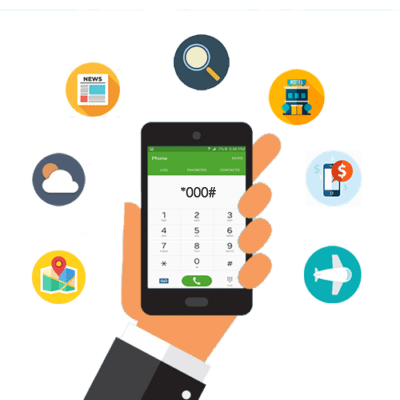
USSD stands for Unstructured Supplementary Service Data. Also known as “Feature Codes” or “Quick Codes,” USSD is a messaging protocol used in cellular networks based on the Global System for Mobile Communications (GSM).
USSD allows you to send small data packages without a data connection and without incurring SMS costs. It’s typically used for sending short requests and commands, and these messages can only contain a maximum of 182 characters (16 bits of data). USSD doesn’t support Multimedia Messages (MMS) like audio, video, or images.
Unlike SMS, which can be sent Person-to-Person (P2P) or Application-to-Person (A2P), USSD messages are always sent to or from a network entity, such as the Home Location Register (HLR), Mobile Switching Center (MSC), Short Message Service Center (SMSC), or a dedicated USSD application. The other endpoint could be a mobile phone or an application.
While SMS transmissions pass through an SMSC, which stores messages and forwards them to the recipient, USSD transmissions use a USSD gateway to create an open session between the two network entities, allowing for real-time communications and Instant Messaging (IM) services.
Due to the low character limits and lack of Person-to-Person capabilities, USSD has limited applications for consumers. Some of the most common uses are to check balances on prepaid phones, reset passwords, or to initiate callbacks. Some businesses use USSD to push outbound marketing messages to mobile devices.
USSD messages always begin with an asterisk, followed with digits, and end with the pound sign. The numbers represent a code the network uses to establish a connection with a particular entity, and different Mobile Network Operators (MNOs) use different codes.
As an example, a USSD message to request a device’s location might look like this: *999#. The network would then retrieve the information from the network’s HLR and send it back to the user.
Depending on how it’s configured, when a user initiates the USSD communication, the first reply will often present them with a menu, instructing the user to send specific codes to request information or issue a command.
Low-cost data transmissions
USSD effectively lets you bypass data charges. And transmissions through this communication protocol don’t count as SMS. You can use USSD to issue simple commands like turning devices on and off or changing settings without paying data rates.
Additionally, this lets you circumvent costly roaming charges. USSD communications are always routed through the home network, even when you’re roaming. But since you’re not using the network for a data connection, you’re not subject to the usual roaming data rates. The network your device is “visiting” still has to forward your USSD messages through your home network, but the cost is always going to be significantly less than what you’d pay to send the same messages through SMS.
Low power consumption
Since it doesn’t use a network’s data connection, USSD uses significantly less power to transmit messages. Instead, it sends text-based messages through the network’s voice channel. If battery life is crucial, USSD can be an effective way to extend your device’s battery life—particularly if your device sends or receives a lot of transmissions throughout its lifecycle.
Global coverage
2G cellular networks are no longer the most widely used technology for mobile connections—but they have three decades of infrastructure built-up around the world. Since these networks use GSM standards, you can leverage USSD on any of them.
Limited data throughput
With 16-bit data limits, it’s no wonder using USSD doesn’t incur data charges: it’s barely using data! Even if 16 bit, 182 character transmissions are enough for your application, it’s important to remember that USSD isn’t suitable for things like pushing Over-the-Air (OTA) updates to your device. And obviously, if your device records audio, video, or images of any kind, it won’t be able to transmit them through USSD.
It’s not future-proof
GSM networks have been around for a long time. Cellular carriers worldwide are in the process of sunsetting their 2G and even 3G networks to repurpose their frequency bands for more advanced technologies. Over the next few years, the 2G coverage map will continue to dwindle, and there will be fewer countries where you can leverage GSM technology like USSD.
What is an MSISDN?
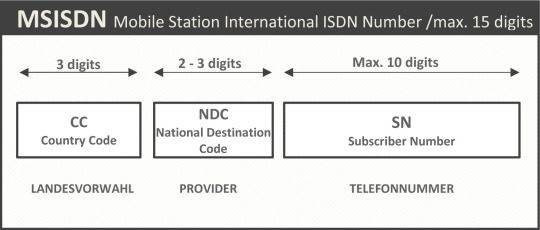
An MSISDN is the phone number you use to connect with a specific mobile user on a network. Any time you call or text someone, you’re using the MSISDN to reach them, and they use your MSISDN to identify you.
The Mobile Station International Subscriber Director Number (MSISDN) is basically your mobile phone number – used as a unique identity used to enable routing of voice and SMS traffic to and from a specific device on a mobile network. Unlike an International Mobile Subscriber Identity (IMSI), an MSISDN isn’t locked to a particular SIM card. A subscriber can change their MSISDN, keep it with them after changing devices, or use the number to forward connections to another device.
The MSISDN includes a maximum of 15 digits. The minimum number of digits varies because it’s defined by the local regulating body in each country. Whatever the length, MSISDNs have three distinct components:
- Country Code (CC)
- National Destination Code (NDC) or Number Planning Area (NPA)
- Subscriber Number
Country Codes come from a list defined by the International Telecommunication Union, and you only have to enter them to connect to a specific device if its home network is in another country. Country Codes are always 1-3 digits.
National Destination Codes and Number Planning Areas are the prefixes attached to a subscriber’s unique number, commonly known as area codes.
Subscriber Numbers are unique to the individual subscription.
What is an eSIM?
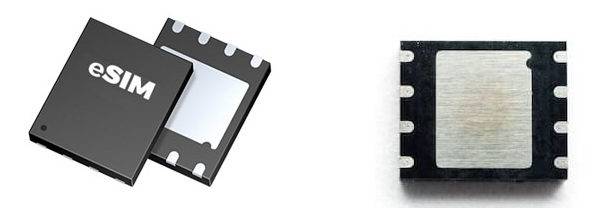
An eSIM refers to an Embedded Subscriber Identity Module or an Embedded Universal Integrated Circuit Card (eUICC). An eUICC is a component of a SIM card that allows you to change operators Over-the-Air (OTA). In contrast, an embedded SIM is an actual SIM card that gets soldered directly into a cellular device.
In smartphones, an embedded SIM always uses an eUICC, which is why you’ll often see these terms used synonymously.
Traditional SIM cards come in several form factors (mini, micro, nano) and have to be plugged into a device, but an MFF2 SIM is a specialized form factor that fits right on the circuit board. Soldering it to the circuit board protects it from dust, electric shocks, and other environmental hazards. MFF2s are significantly smaller than traditional SIMs, too, which gives manufacturers more room and the ability to create sleeker devices.
Consumer: When a device with a user interface such as any mobile handset is configured to support an eSIM and the eSIM environment that allows the user the choice to change subscriptions using the SM-DP+ platform
M2M: This is for unmanned devices such as automotive and telemetry where no user interface is provided on the device and the subscription is controlled from the server side using the SM-DP and SM-SR
Consumer eSIMs are available in high-end phones like the iPhone, Google Pixel, Samsung S20 or Huawei P40. They are directly soldered within the device. The user can simply select the operator for the eSIM on the phone or by scanning a QR code which directly downloads the new operator profile to the SIM. This “pull” model is quite simple to handle.
M2M eUICC/eSIMs are a different breed and need completely different technology. In fact the technology is older than the one for the consumer use case and specially designed for the automotive sector. The M2M eUICC variant requires a more complex infrastructure because you usually don’t have the connected device in your hands when you want to change the profile, and there is no camera or device agent available that can pull the profile to the device.
M2M eUICCs are registered to a specific subscription manager platform component (SM-SR) that is either owned by the automotive manufacturer or by an operator. In case the car manufacturer wants to add or change operators, they need to integrate or migrate the eUICCs over to another platform which requires several months and high costs to accomplish.
However, standardization bodies like GSMA have made progress toward simplifying profile management for the M2M case and come up with a pull model as well.
Standard SIM cards come in several different form factors:
- 2FF (mini)
- 3FF (micro)
- 4FF (nano)
- MFF2 (embedded SIM)

M2M eUICCs/eSIM come in the same form factors, but with the advantage of being able to switch the profile associated with them.
Longer Lifespan
In addition to being better protected from the elements (because it’s soldered to your device, so the connection pins stay in place better), embedded SIMs actually have a longer lifespan than traditional SIMs. An MFF2 eSIM can last up to 17 years, whereas a traditional SIM may last more like 10 years.
Simplified SIM logistics
The idea behind the eUICC/eSIM is to solve some major logistical hurdles that manufacturers and end users have to navigate with a conventional SIM. Especially when you combine an MFF2 with an eUICC.
Switch between MNO’s without switching SIMs
With traditional UICCs, your SIM is only compatible with a specific cellular carrier and their partner networks. If you want to switch carriers, you need to switch SIMs. One of the biggest benefits of an eUICC is the ability to provision a new MNO profile over-the-Air (OTA), enabling you to connect to new cellular networks.
Simplified regulatory compliance
Some countries (like Brazil and India) prohibit cellular devices from permanently roaming. (In Brazil, for example, you can only roam for 90 days.) This means that to be compliant, you can’t just use a carrier that has a roaming agreement with another operator in these countries. If you’re going to deploy there, you need to have a profile that’s associated with a local carrier.
With an eUICC, you can work with your current carrier and a local operator to provision a new profile to your SIM, so your devices can comply with that country’s telecommunications regulations.
Less dependence on MNO’s
Normally, when your operator starts charging higher prices, you’re stuck with the increased overhead. You can’t just recall all your devices or send personnel to install new SIMs for every customer. The rates go up, and that’s that. But with an eUICC, you have more options. You can provision a new MNO profile to a more affordable carrier and avoid the increased rates.
Similarly, if your carrier goes out of business, it doesn’t have to completely disrupt your business. You can provision a new profile and ensure your customers stay connected, even though your old carrier’s network is no longer available
Lower data costs for new deployments
Just because you have coverage in a country doesn’t mean it’s cost effective. In applications where your devices use a significant volume of data, such as car entertainment systems, you don’t want to be stuck with a profile that charges high rates. An eUICC or multi-IMSI approach lets you switch to a favourable carrier deal.
Limited data throughput
With 16-bit data limits, it’s no wonder using USSD doesn’t incur data charges: it’s barely using data! Even if 16 bit, 182 character transmissions are enough for your application, it’s important to remember that USSD isn’t suitable for things like pushing Over-the-Air (OTA) updates to your device. And obviously, if your device records audio, video, or images of any kind, it won’t be able to transmit them through USSD.
It’s not future-proof
GSM networks have been around for a long time. Cellular carriers worldwide are in the process of sunsetting their 2G and even 3G networks to repurpose their frequency bands for more advanced technologies. Over the next few years, the 2G coverage map will continue to dwindle, and there will be fewer countries where you can leverage GSM technology like USSD.
What Is an ICCID Number?
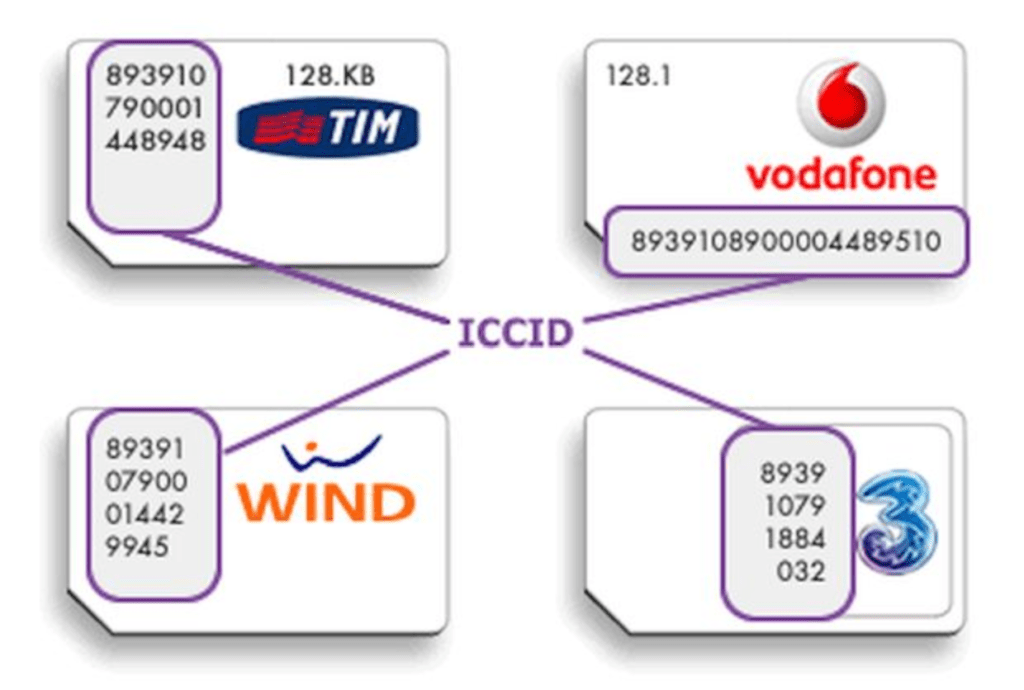
ICCID stands for Integrated Circuit Card Identification Number. It’s a unique 18-22 digit code that includes a SIM card’s country, home network, and identification number. You’ll usually find an ICCID printed on the back of a SIM card and / or it is printed on the packaging materials.
Mobile Network Operators (MNOs) use ICCID numbers to determine which network to connect a subscriber to. Unlike an IMEI number, which refers to the mobile device, an ICCID number refers to the SIM card itself. Since each SIM card has a unique ICCID, you may sometimes hear it called the SIM card number.
A SIM card’s ICCID number is a single string of 18–22 digits, but there are four sets of numbers in each ICCID. As an example, let’s use 8925403162000441691F.
The format of the ICCID is: MM CC II NN NNNN NNNN NN Cx
- MM = Constant (ISO 7812 Major Industry Identifier)
- CCC = Country Code
- II = Issuer Identifier
- N{12} = Account ID (“SIM number”)
- C = Checksum calculated from the other 19 digits using the Luhn algorithm.
- x = An extra 20th digit is used for padding but it is not officially part of the ICCID.
In our example 8925403162000441691F this is shown as:
- 89 = Telecommunications Industry
- 254 = Kenya
- 03 = Equitel
- 16200044169 = Account ID or SIM number
- 1 = Checksum or Luhn number
- F = padding to make 20 digits
The country code and Issuer Identifier represent the country code and mobile operator code, which is established by the International Telecommunications Union.
Since you need the ICCID number to manage a specific SIM card, it’s important to know how to find it. (Especially if you use multiple prepaid SIM cards for the same device.) As shown above the ICCID is usually printed on the SIM card or on the packaging.
A simple SIM card tool can be downloaded from any app store that can query the SIM card and retrieve all relevant information including the ICCID.
After you insert a SIM card into a device that uses cellular connectivity, it searches for any available cellular networks, then uses the ICCID number and IMSI to determine if the device has rights to access the network.
Here’s how it works.
When a device attaches to a “visiting” network (meaning not its home network), that network sends an authentication request to the device’s home network. The network generates a random number and shares it with the device, then uses an authentication algorithm and a shared secret key to produce a new number based on the random one. If the device produces the same number, it proves it has the same secret key and with that it’s authorized to use the network.
If the SIM card doesn’t have the correct key to access the network, the device can only use the network to call emergency services.
IMSI
IMSI stands for “International Mobile Subscriber Identity.” It’s a mobile subscriber’s unique identification number. Like an ICCID, an IMSI is saved on the SIM card. Most SIM cards only store a single IMSI, which is associated with a list of networks the subscriber is authorized to access.
An IMSI is not the same as a telephone number. The IMSI number has up to 15 digits and consists of three parts:
- The first three digits are the Mobile Country Code (MCC). This can be used to determine the home country of the operator that issued the SIM card. The IMSI of European countries always starts with the number 2.
- The following two or three digits are the Mobile Network Code, which represents the network the user is active in. For example, the number 01 represents Deutsche Telekom.
- All subsequent numbers are specifically assigned to the user, and no two users share the same IMSI number.
IMEI
The International Mobile Station Equipment Identity, or IMEI for short, is one unique 15-digit serial number that can be used to uniquely identify each mobile radio terminal (your device). It includes four parts:
- The first two digits indicate the reporting body identifier showing Type Allocation Code (TAC) by the GSMA approval group.
- The next six digits are the TAC.
- The six digits after that uniquely identify the individual device.
- The final number is the check digit, which helps prevent errors in equipment databases.
There are also “software versions” of IMEIs, referred to as IMEISVs. In an IMEISV, there is no check digit, and the last two digits represent the Software Version Number (SVN


